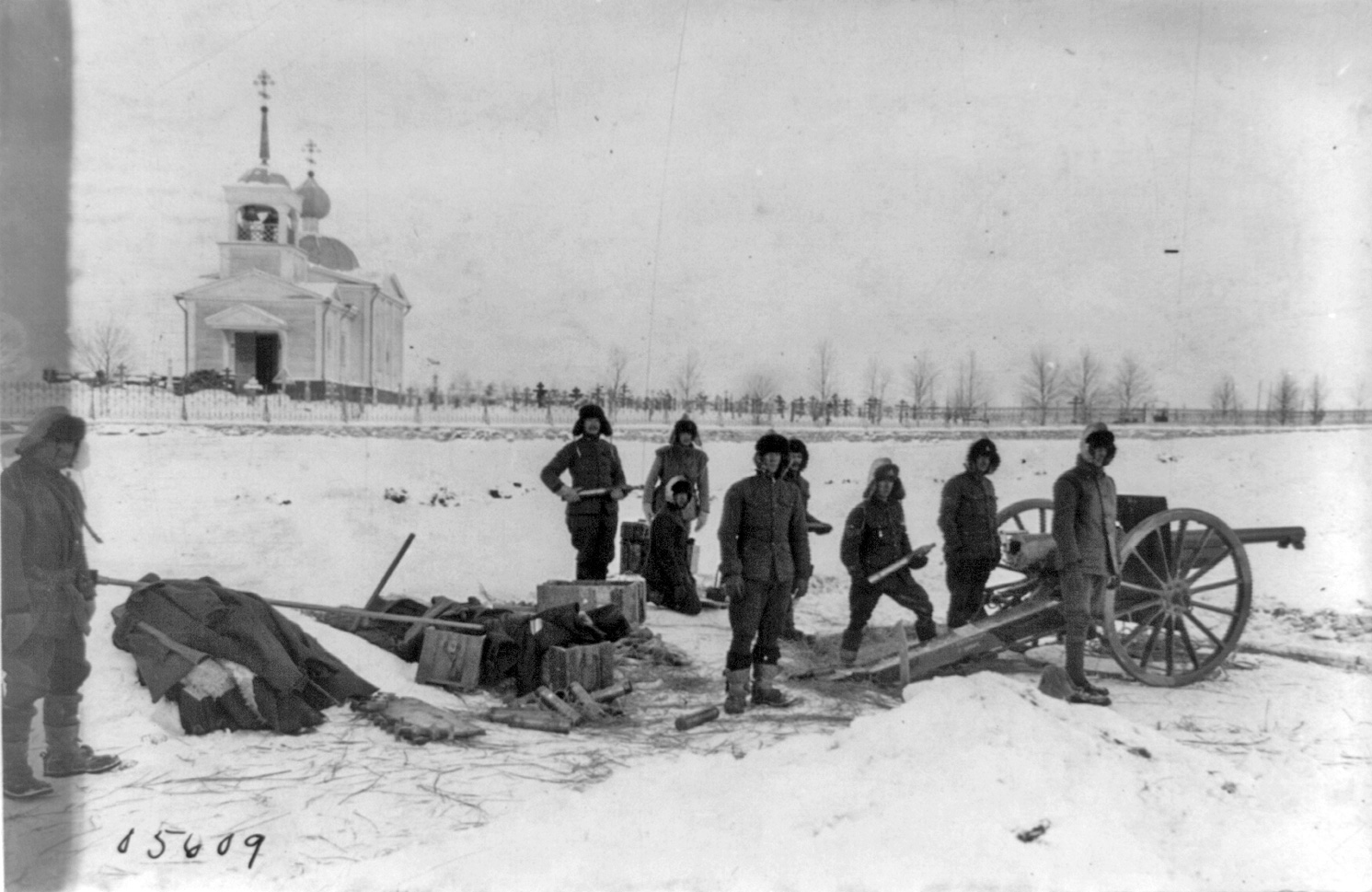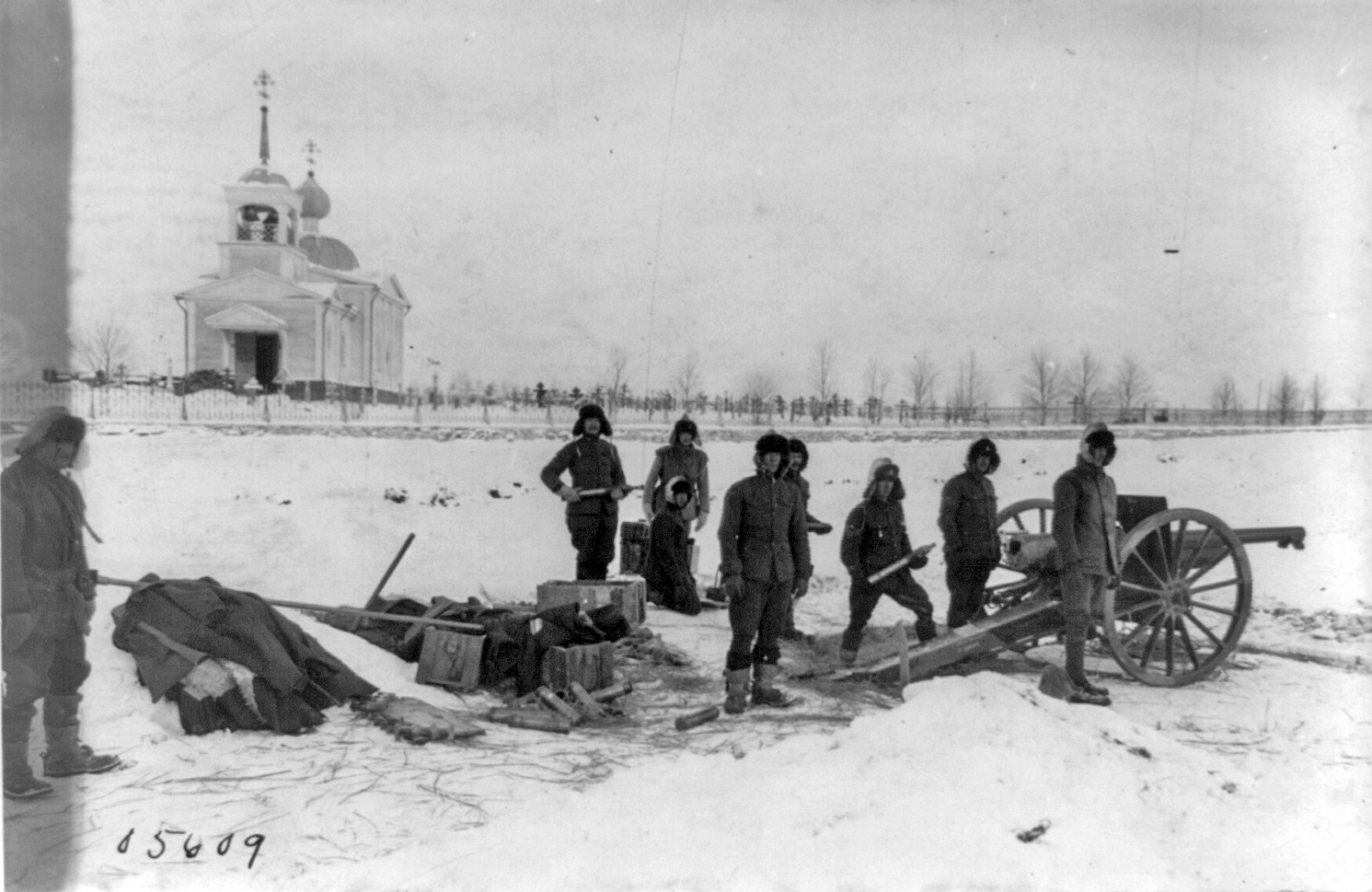

106 years ago, American troops were in a pitched battle for control of villages in northern Russia, fighting on a mission tied to a war that had ended a month prior. It was Dec. 30, 1918, and American soldiers from the Midwest were outside the village of Kadish, preparing to launch an offensive that would move from town to town, regaining territory ceded to Bolsheviks a month prior. It was part of one of the biggest fights between Americans and Russian communists, but it was years before the outbreak of the Cold War.
World War I ended on Nov. 11, 1918 with the armistice. The guns fell silent on the Western Front. On the Eastern Front, fighting had stopped earlier in the summer when Vladimir Lenin’s Bolshevik government signed a treaty ending fighting with Germany. The Central Powers began shifting troops west. That’s why in the summer of 1918 the allies of the Entente Treaty sent thousands of soldiers to Russia, hoping to secure war materials and possibly reestablish the Eastern Front. After some goading from French and British leaders, American President Woodrow Wilson also agreed to help.
Allied forces carried out interventions throughout the former Russian Empire, with thousands of troops deploying to the north and south, as well as into Siberia and around the eastern city of Vladivostok. It was the American Expeditionary Force, North Russia that would later earn the nickname the “Polar Bear Expedition.”Roughly 5,000 troops, mainly from the 339th Infantry Regiment went to Arkhangelsk (another 8,000 or so from other units went east). Their mission: protect the weapons and also support the Czechoslovak Legion, an allied force fighting against the communists in the expanding Russian Civil War.
The European powers sent veterans of the last four years of conflict. They had seen the most intense fighting of the war; some had survived Verdun. The American forces, predominantly from Michigan and Wisconsin, were not hardened from fighting on the Western Front. In fact, many of the Americans thought they were heading to France. After all, that was where the bulk of the fighting was, they were mobilized to fight against the German-led Central Powers. They were told they were there to secure a large cache of weapons and munitions at Arkhangelsk, lest it fall into German hands or into the Bolsheviks.
American troops reached Arkhangelsk in September 1918, after some training in the United Kingdom on surviving arctic conditions, and after an outbreak of the Spanish influenza spread through their transport ships. After that, conditions for the expeditionary force got worse. They found themselves put under the command of British forces there, and then started expanding out from the city, heading into the north Russian countryside to fight the Bolshevik forces — referred to contemporaneously as the “bolsheviki” or “bolos.” It was also starting to get cold and medical supplies were in short supply. Many Americans were dying from disease and exposure, not combat.
They pushed out into the countryside, engaging in skirmishes with the Bolsheviks. For the Americans, this was their first taste of the kind of trench warfare and machine gun fire that had defined the first World War. Soon they found themselves trapped as the Russian winter set in.
That’s how 106 years ago American soldiers from the Midwest found themselves assaulting the Russian village of Kadish. After pulling back at the start of winter, Americans alongside British-led Canadian troops, launched a late-December offensive to capture several villages along the railway. The swift attack was a success, although the New York Times reported that the village of Kadish was “in ruins.”
With one contemporaneous report noting that howitzers had to be transported by sleighs to be moved into position for the attack. The bitter cold also meant guns started to malfunction and not work. But despite it, Americans captured the village. One soldier, Sgt. George Comstock, was awarded the Distinguished Service Cross for his efforts in rescuing injured soldiers in the fight.
“The recapture of Kadish was marked by some heavy fighting, in which, however the American casualties were light,” the Spokesman-review wrote. “This village, about midway between the Vologda railway and the Dvina river, was strongly defended and bolsheviki there used blockhouses built by the American and British when they occupied the town in November, prior to being driven out by large forces of bolsheviki.”
However the big push failed to sweep the Bolsheviks away. The Allies and the bolos began an artillery duel while the communist forces reinforced their lines. Americans set fire to Kadish and withdrew before they were ordered back by their commanders.
By the end of December 1918 the soldiers in the expeditionary force also were well aware that World War I was over. It was more than a month since the armistice and word had reached Russia. Already dealing with low morale, they entered 1919 facing a growing bolo counterattack and wondering why they were even in Russia fighting. Soldiers began to rebel, refusing to follow orders and declaring that they wanted to go home. A heavy and bloody defeat on Jan. 19 caused more dismay among the American troops. Outrage at home also grew until February, when the Secretary of War declared that “at the earliest possible moment that weather in the spring will permit.” It being northern Russia, that took several more months.
Finally in the spring relief started to arrive. Over May and June, Americans in northern Russia were able to withdraw. By the time they left the warzone at least 200 were dead, half from combat, half from disease and exposure. Many more were wounded in the expedition.
Future U.S. diplomat John Cudahy, part of the 339th Infantry Regiment, later wrote in his book “Archangel” that “[w]hen the last battalion set sail from Archangel, not a soldier knew, no, not even vaguely, why he had fought or why he was going now, and why his comrades were left behind — so many of them beneath the wooden crosses.”
The latest on Task & Purpose
- Special Forces soldier dies in non-combat incident at Eglin range
- A Marine’s disciplinary record from 100 years ago reveals rank-and-file life as much the same
- Navy shoots down its own F/A-18 in Red Sea fight
- The Coast Guard is building up its Arctic fleet
- Coast Guard pilot receives top flying honor for helicopter rescue
